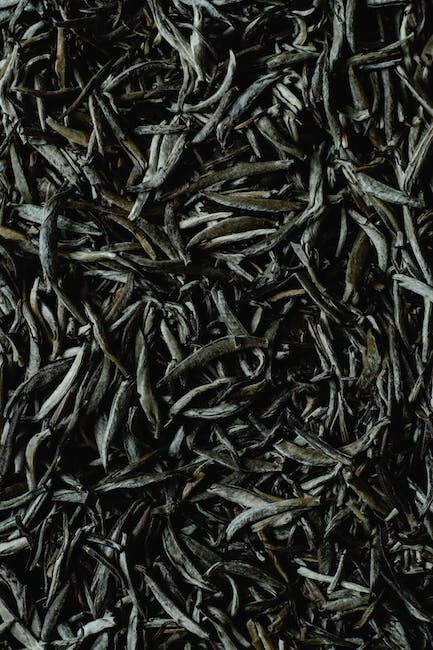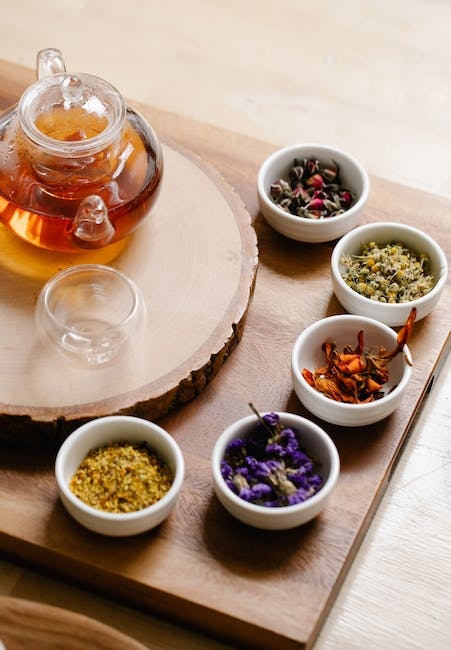Discovering the Wonder of Oolong Tea: A Journey Through Time and Tradition
Tea has been a staple in Chinese culture for centuries, and oolong tea is no exception. This unique blend of tea leaves has been enjoyed by emperors and commoners alike, and has captured the hearts and taste buds of people all over the world. In this blog post, we will take a journey through time and tradition to discover the wonder of oolong tea.
Origins and Legends
The Ming Dynasty (1368-1644) in China saw the birth of oolong tea. The name “oolong” means “black dragon” in Chinese, which could refer to the dark, twisted appearance of the leaves. Legend has it that oolong tea was discovered by accident when a tea farmer was distracted by a deer and forgot to process his tea leaves, resulting in a partially oxidized tea with a unique flavor.
Production and Process
Oolong tea production involves a meticulous process that starts with withering the leaves under the sun, then shaking or tossing them to bruise the edges and start the oxidation process. The leaves are then partially oxidized and fired to stop the oxidation process. This process results in a unique blend of flavors and aromas, ranging from fruity and floral to nutty and smoky.
Traditionally, oolong tea is produced in Fujian and Guangdong provinces of China, but is now also grown in Taiwan, Vietnam, and other regions. Each region has its own unique take on the production process, resulting in a diverse range of oolong teas.
Cultural Significance
Oolong tea has been popular in Chinese culture for centuries, and was even served to emperors and royalty as a tribute tea. It was also exported to Europe and other countries during the 19th century. Today, oolong tea is enjoyed all over the world for its unique flavor and health benefits.
Health Benefits
Oolong tea is known for its various health benefits, including aiding in weight loss, improving heart health, and reducing the risk of chronic diseases such as diabetes and cancer. It contains antioxidants and polyphenols that help fight off free radicals and prevent cell damage.
Conclusion
Oolong tea is a unique blend of tradition, culture, and health benefits. Its diverse range of flavors and aromas make it a favorite among tea enthusiasts, while its health benefits make it a popular choice for those seeking a healthier lifestyle. Whether you’re looking for a new tea to try or are already a fan of oolong tea, its wonder and charm are sure to captivate you.
The Benefits of Oolong Tea: A Delicious Way to Boost Your Health
Are you looking for a tasty and healthy way to improve your wellbeing? Look no further than oolong tea! This traditional Chinese tea has been enjoyed for centuries for its delicious flavor and numerous health benefits. Let’s take a closer look at the research and explore why oolong tea should be part of your daily routine.
Antioxidants and Anti-Inflammatory Properties
One of the key benefits of oolong tea is its high antioxidant content. Oolong tea leaves are rich in polyphenols, which can help to protect your body from free radicals that can damage your cells and contribute to chronic diseases.
In addition, the polyphenols found in oolong tea leaves have anti-inflammatory properties. This means that drinking oolong tea regularly can help to reduce inflammation throughout your body, which is important for maintaining good health and preventing chronic diseases.
Mental Focus and Stress Reduction
Not only is oolong tea good for your body, but it’s also good for your mind. Oolong tea leaves contain caffeine and theanine, which work together to improve mental alertness and focus, and promote relaxation and stress reduction. So, if you need a little pick-me-up during the day, a cup of oolong tea might be just what you need.
Reduced Risk of Chronic Diseases
Studies have suggested that drinking oolong tea regularly may help to lower the risk of certain chronic diseases. For example, oolong tea has been linked to a reduced risk of heart disease, diabetes, and certain types of cancer. While more research is needed to fully understand the relationship between oolong tea and these conditions, adding oolong tea to your diet certainly can’t hurt.
Healthy Digestion and Metabolism
In addition to its other benefits, oolong tea may also help to support healthy digestion and metabolism. This is because oolong tea leaves contain compounds that can help to improve the absorption and breakdown of nutrients in your body. Plus, drinking oolong tea regularly may aid in weight management when consumed as part of a balanced diet and healthy lifestyle.

Consumption in Moderation
While oolong tea leaves can offer a range of potential health benefits, it’s important to consume them in moderation and as part of a balanced diet and lifestyle. As with any food or beverage, it’s important to consult with a healthcare professional to determine how much and how often to consume for individual health goals and needs.
Conclusion
In conclusion, there are many reasons to love oolong tea. From its delicious flavor to its numerous health benefits, this traditional Chinese tea is a great addition to any diet. So, why not brew up a cup of oolong tea today and start reaping the rewards?
Discover the World of Oolong Tea: A Guide to Its Varieties and Flavors
Are you a tea lover looking to expand your palate? Look no further than oolong tea. This traditional Chinese tea is known for its unique taste and aroma, which can vary depending on the region where it is grown and processed. In this guide, we’ll take a closer look at the different varieties and flavors of oolong tea.
Types of Oolong Tea
There are several types of oolong tea, each with its own distinct flavor and aroma. Here are some of the most popular varieties:
| Type of Oolong Tea | Region of Origin | Flavor and Aroma |
|---|---|---|
| Fujian oolong | Fujian province, China | Floral aroma and sweet taste |
| Wuyi oolong | Wuyi Mountains, China | Rich and smoky flavor |
| Tie Guan Yin oolong | Anxi province, China | Orchid-like aroma and fruity flavor |
| Darjeeling oolong | Darjeeling region, India | Musky and earthy flavor |
Of course, there are many other types of oolong tea available, each with its own unique flavor profile. The taste and aroma of oolong tea can be influenced by a variety of factors, including the altitude at which it is grown, the soil conditions, and the time of year when it is harvested.
Flavored Oolong Tea
Some oolong teas are also infused with other flavors to create unique blends. These can include fruits, flowers, and herbs. Here are some examples:
- Peach oolong: a blend of oolong tea and peach flavoring
- Jasmine oolong: a blend of oolong tea and jasmine flowers
- Mint oolong: a blend of oolong tea and mint leaves
Flavored oolong teas can be a great way to experience the unique taste and aroma of this traditional Chinese tea in a new and exciting way.
Choosing the Right Oolong Tea
When it comes to choosing the right oolong tea for you, there are a few things to keep in mind. First, consider the flavor profile that you are looking for. Do you prefer a floral aroma or a smoky flavor? Next, think about the origin of the tea. Do you want a traditional Chinese oolong or are you interested in trying an Indian variety?
Finally, don’t be afraid to experiment with different types of oolong tea. With so many varieties and flavors to choose from, there is bound to be an oolong tea that is perfect for you.
In Conclusion
Oolong tea is a unique and flavorful tea that is a great way to expand your palate and experience different tastes and aromas. With so many varieties and flavors to choose from, there is an oolong tea for everyone. So why not give it a try and discover the world of oolong tea today?
How to Brew the Perfect Cup of Oolong Tea
Are you a fan of oolong tea but unsure of the best way to brew it? Look no further! We’ve compiled some research and tips to help you make the perfect cup of oolong tea every time.
Water Temperature and Steeping Time
First things first, let’s talk about water temperature and steeping time. Oolong tea leaves should be steeped in hot water for 3-5 minutes depending on the desired strength of the tea. It’s important to note that the water temperature should be around 180-190 degrees Fahrenheit, which is cooler than boiling water to prevent scorching the leaves.
Amount of Tea Leaves
Next, let’s talk about the amount of tea leaves to use per cup. While the amount can vary, a general rule of thumb is 1 teaspoon of loose leaves per 8 ounces of water. However, feel free to adjust to your personal preference for strength.
Multiple Infusions
One of the great things about oolong tea is that it can be steeped multiple times, with each infusion imparting a slightly different flavor and aroma. So don’t throw away those leaves after one cup!
Using a Gaiwan or Small Teapot
Some oolong tea drinkers prefer to use a gaiwan or small teapot for brewing, as this allows for better control of the steeping process and can bring out more nuanced flavors. However, a regular teapot or infuser will work just fine as well.
Quality of Tea Leaves
Lastly, it’s important to use high-quality, fresh oolong tea leaves to achieve the best flavor and health benefits. Stale tea leaves can produce a dull, flat-tasting tea. So make sure to source your oolong tea from a reputable source and store it properly in an airtight container away from light and moisture.
With these tips in mind, you’re well on your way to brewing the perfect cup of oolong tea. Enjoy!


Leave a Reply